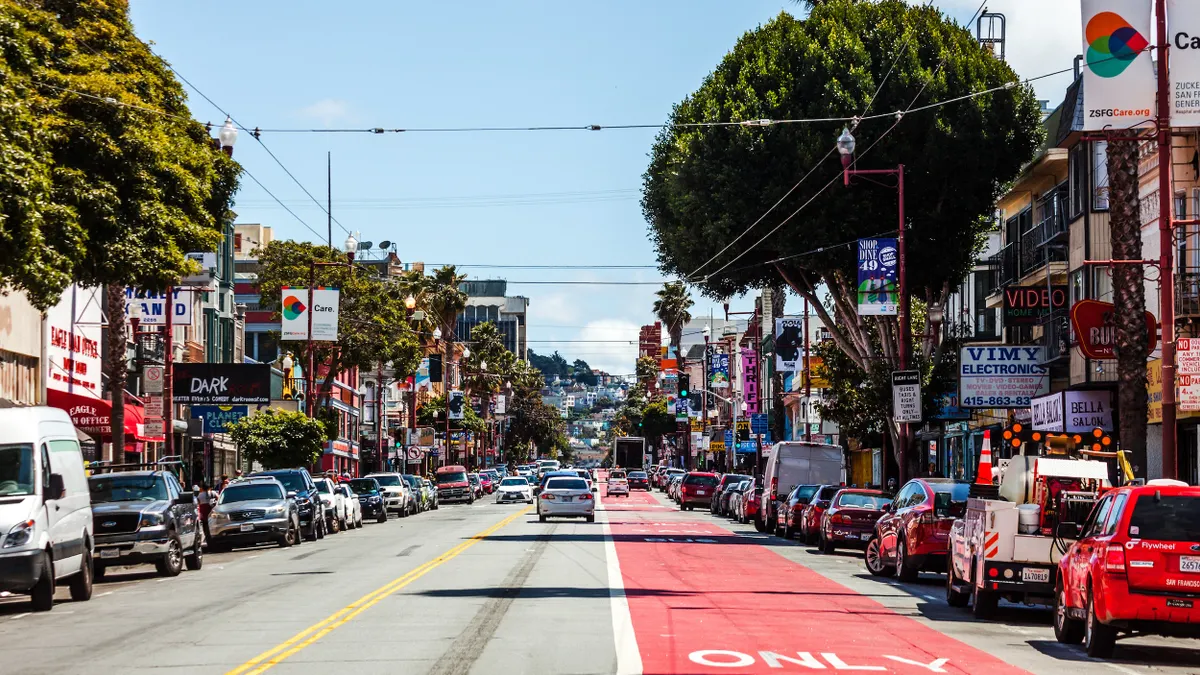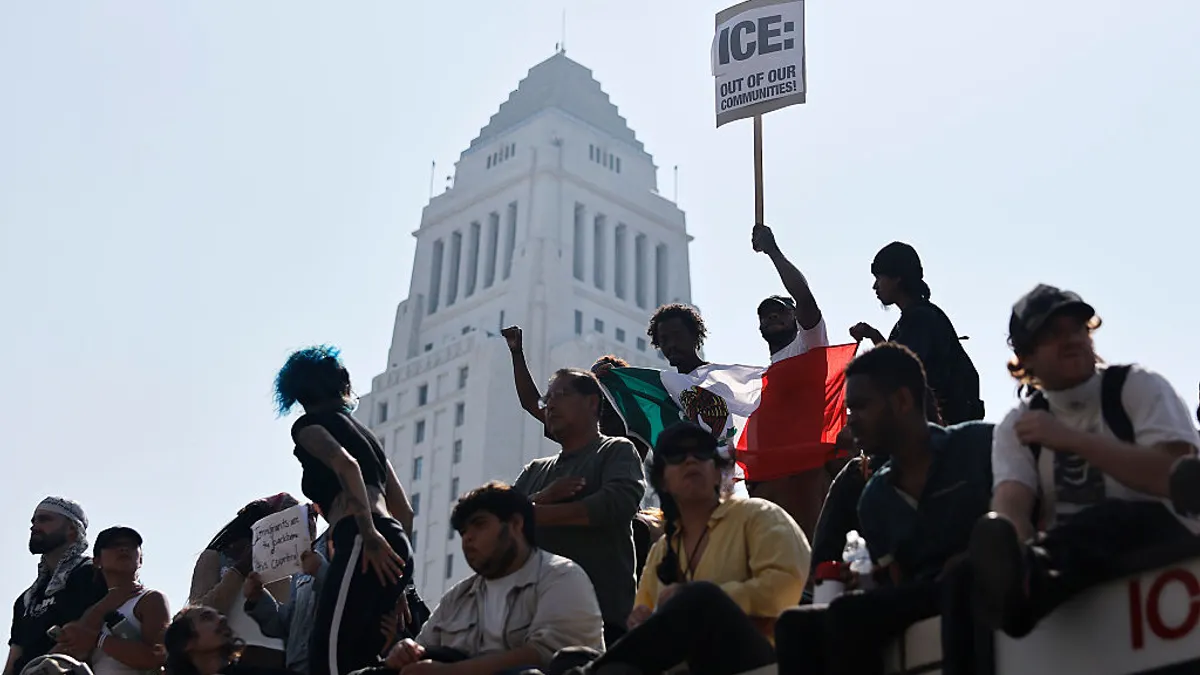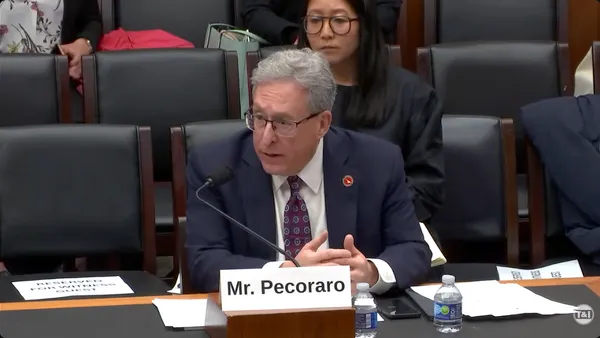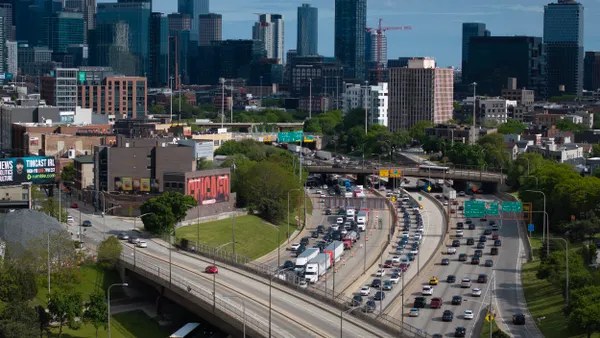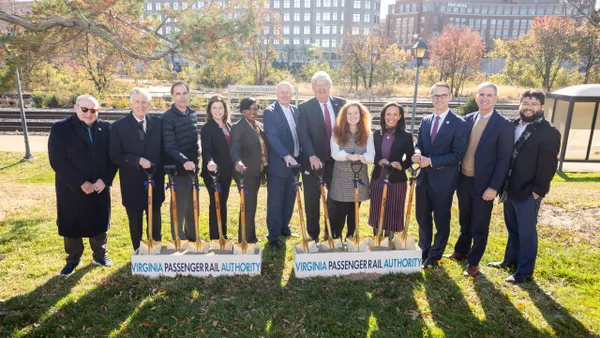Dive Brief:
- Six months into San Francisco’s deployment of speed safety cameras, speeding declined by an average of 72% at 15 sites where before-and-after data were available, according to the San Francisco Municipal Transportation Agency, which administers the program.
- Average speeds at 12 of these locations were above the posted speed limit before the camera installations; now drivers are, on average, below the speed limit at all 15 sites, and the average speed has declined by 4 mph.
- The cameras began operating at 33 locations on March 20 in the city’s high-injury network, where 12% of streets have the highest concentration of severe injuries and fatal collisions.
Dive Insight:
The city of San Francisco is one of six California entities authorized by a 2023 law to deploy automated speed safety cameras as a pilot program, and it is the first in the state to establish automated speed camera enforcement.
Drivers exceeding the speed limit by 11 mph or more received warnings for the first 60 days of the program. After that, citations were issued.
“Speed cameras are proven to help keep people safe on the streets, and we are already seeing positive results from the warning period: Cameras are issuing fewer notices, and drivers are going at safer speeds,” San Francisco Mayor Daniel Lurie said in an emailed statement. “As our kids go back to school and more people continue to go into the office, we’re using this new technology to make our streets safer for our kids, our seniors, and our entire community.”
Camera locations are spread across the city, with a concentration in the Mission and South of Market districts. The cameras take still photos only, and each is reviewed by SFMTA staff. The system does not use facial recognition technology.
Revenues from the speed safety camera program will be used to maintain the camera network and fund street safety projects, such as traffic calming and road improvements, according to the SFMTA.



